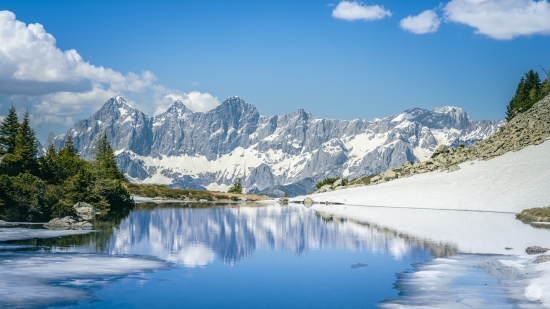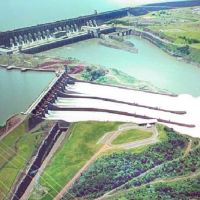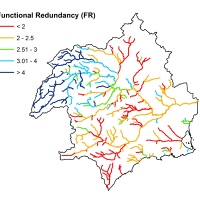Lake temperature ‘regimes’ will shift under future climate change

Water temperature is an important variable in lake ecosystems across the world. Variations in water temperature influence a wide range of environmental patterns and processes, including species distributions, growth rate, phenology, food webs, and greenhouse gas emissions.
Predictions of future climate change suggest that lake temperatures are likely to warm in many places, altering ecosystem health and functioning. Understanding and modelling lake water temperatures is thus a key step for freshwater scientists working on climate change resilience and adaptation.
However, until now, there has been no global classification of water temperature into ‘lake thermal regions’ to support this work. A newly published study in Nature Communications addresses this shortfall.
Professor Stephen Maberly from the Centre for Ecology & Hydrology, UK and colleagues used satellite data to identify nine different lake thermal regions across the world. They grouped global lakes based on seasonal patterns of their surface water temperatures. The coldest thermal region includes lakes in Alaska, Canada, Siberia and China, and the warmest covers lakes in equatorial South America, Africa, India and south-east Asia.
“Thanks to cutting-edge analysis using satellite images of more than 700 lakes, taken twice a month over 16 years, we produced the first global lake temperature classification scheme,” says Prof. Maberly. “By combining this with a lake model and climate change scenarios we were able to identify that northern lakes, such as those in the UK, will be particularly sensitive to climate change.”
The study is the result of a collaboration between researchers from the Universities of Dundee, Glasgow, Reading and Stirling and the Dundalk Institute of Technology.

The research team used climate change models to predict that under the most extreme climate change scenario (Representative Concentration Pathway 8.5), global lakes would be on average 4°C warmer, and 66% would be classified in a warmer thermal regime. Under low (RCP 2.6) and medium (RCP 6.0) future climate change scenarios, 12% and 27% of lakes would be shifted into warmer thermal regimes.
Under the most extreme climate change scenario, the research team predict that there will be a 79% reduction in the number of lakes in the coldest and northern-most thermal regime by 2100. In other words, warmer waters due to extreme climate change could cause the disappearance of over three-quarters of unique sub-polar lake ecosystems over the next century.
Even if climate change is less extreme than this scenario, there are still likely to be negative effects on cold-water species and ecosystems. “Cold-water fish species in particular can be stressed by warmer temperatures,” explains Prof. Maberly. “The potential negative impact on salmonids such as salmon, trout and Arctic charr, for example, is concerning because they play a central ecological role within food webs and also have great economic importance.”
Professor Andrew Tyler of the University of Stirling, who led the overall project, GloboLakes, says, “This is an example of pioneering UK-led research that has delivered the capability to monitor our inland waters at the global scale from satellite based platforms. This is not only yielding new insights into the impacts of climate change, but also the evidence base from which to better manage these ecologically sensitive environments and mitigate against the effects of change.”
+++
An app to classify lakes into the nine thermal regions is available in the R programming language at GitHub.















Comments are closed.